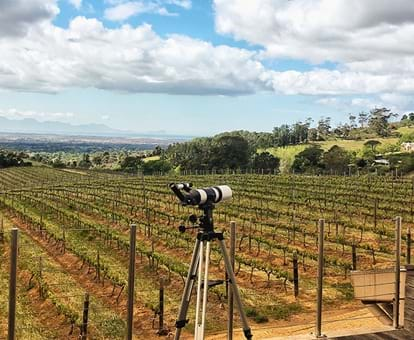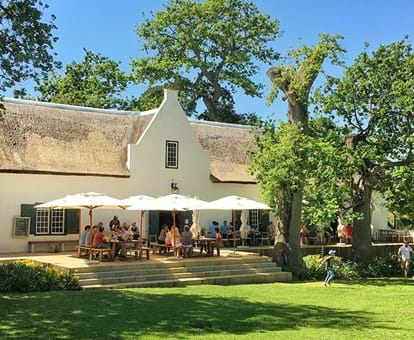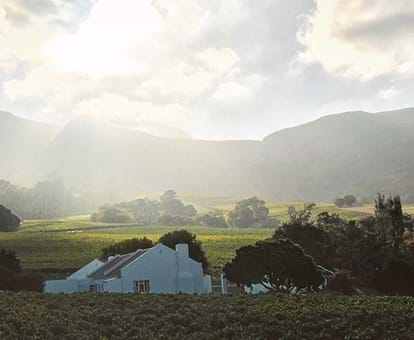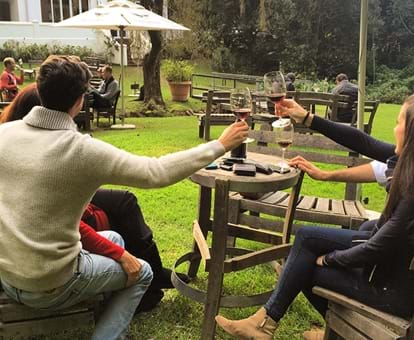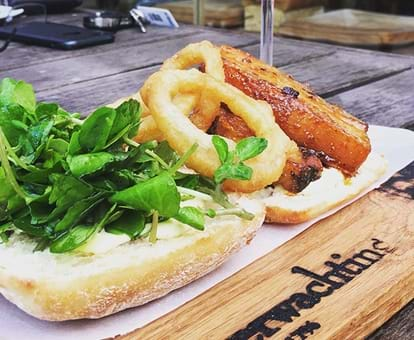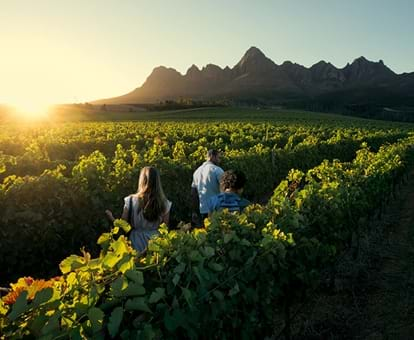By creating an account, I agree to the
Terms of service and Privacy policy
Choose your country and language:
Africa
Americas
Asia Pacific
Europe
IIn the stormy corner of the continent, South Africa’s modern history began with a fledgling community, and a garden. Its raison d'être was to be a halfway stop between the East and the West, offering passing vessels refreshments, fruit and vegetables. However, something else rose very quickly to importance.
Jan van Riebeeck, the Cape’s first commander, erroneously believed that wine had a high vitamin C content, and that it would be a perfect remedy for the scurvy-afflicted sailors. He swiftly planted vines and within seven years, wine was already produced. These first vines were in the City Bowl near the Company Gardens, but the soil was far from ideal for viticulture and the wine was ghastly.
Thankfully, Simon van der Stel arrived just more than 20 years later, bringing with him knowledge and expertise in winemaking. He combed through the Cape Town soil, analysing it in one-kilometre intervals, until he hailed Constantia as the “terroir ideal”. Groot Constantia was given to him as his homestead, and it became the first wine farm in South Africa, and indeed the Southern Hemisphere.
Years on, and it’s an immense privilege to live in - and introduce visitors to - the infinite riches unique to this part of the country. Here’s a brief guide to four of the more noted wine-producing areas near Cape Town.
Constantia
The leafy southern suburb of Constantia is home to Cape Town’s very own wine region, embracing nine farms on its official route. From 333-year-old heritage properties to the modern styling of the newer farms, this wine region can boast being the oldest in the Southern Hemisphere. The farms of Constantia honour their inheritance with exceptional wines and breathtaking scenery, perfect tributes to the opulence of modern history.
Foodies will revel in the various dining options available, including several top award-winning restaurants such as La Colombe, The Greenhouse, and Chef’s Warehouse.
My recommendations here include: the vine-laden panoramas at Constantia Glen, a modern tasting room experience at Beau Constantia, bubbly tasting at Steenberg, a garden getaway at Eagle’s Nest, heritage tours at Groot Constantia, sipping the legendary Vin de Constance at Klein Constantia, a market experience at Constantia Uitsig, superlative dining at Buitenverwachting, and sampling organic wines at Silvermist.
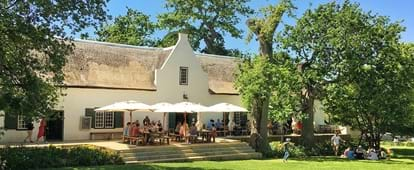
Stellenbosch
Van der Stel soon wanted to expand his vinicultural endeavours, and Stellenbosch became both the second town and wine-producing region in the country. A 45-minute drive from Cape Town and you’re in the heart of the “City of Oaks”, which has bragging rights to more than 170 wine farms, so you’ll never be short of variety. Enjoy a short stroll through the historical part of the city, with its al fresco dining and oak-lined streets.
My recommendations are Tokara for views, Delaire Graff for dining, Glenelly for French-styled wines, Spier for picnics and Segway tours, Waterford for wine and chocolate pairings, Villeria for bubbly, and Simonsig for heritage.
Paarl
The third of the Cape settlements is Paarl, aptly named after early explorers likened the round granite rock that sits high above the town to that of a pearl. It’s a rather scenic drive up the mountain: leave your car at the final car park, and if you’re not afraid of heights, use the chain to climb to the top for astounding views of the town.
My farm recommendations are Spice Route Destination for an eclectic tasting adventure, Fairview for cheese and wine pairings, Nederberg for a heritage visit, KWV Wine Emporium for an educational experience, and Landskroon for a more intimate tasting option.
Franschhoek
Hailed by many as the food and wine capital of South Africa, this quaint village must surely be one of the most beautiful in the land. The town is securely nestled in a picturesque valley, flanked on three sides by Cape Fold Mountains. In winter, it feels as if you’ve stepped into a little European village, sans the snow. You’ll also hear a variety of foreign accents, as Franschhoek is a popular tourist stop.
The name Franschhoek means French quarter, as the Cape government granted amnesty to French protestants who were fleeing religious persecution. Since they were renowned for being keen agriculturalists, they were given land, and so birthed the French influence that is still characteristic of the area. A stop at the Huguenot Memorial Museum in town will help tell more of the story.
My recommendations are Dieu Donne for views, Haute Cabriere for an underground cellar tour, Le Lude for bubbly tasting, Grande Provence for wine and art, Lynx Wines for a boutique experience, Boschendal for beautiful gardens, and Rupert & Rothschild for a stellar array of both local and international wines.
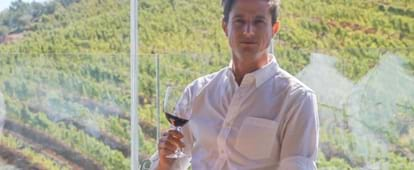
AAbout the author
Jared Ruttenberg is an experience junkie and aficionado: new experiences and an ever- changing horizon keeps him alive. Of course waking up in Cape Town - which he and a few million others think is just the most exciting city in the world - means there is much to explore. And then the rest of South Africa too - so much to see and so little time! Jared splits his time between writing, running private tours, and social media influencer work.
PPlanning a trip to South Africa? Meet Your South Africa guides, the people that know the country best! Read the Meet Your South Africa magazine here
__________________________________________________________________________________
For inspiration and insider tips, follow us on Instagram, Facebook, or Twitter. Tag #MeetSouthAfrica to share your pics with us, or subscribe to our newsletter for latest updates.
Related articles

|Terms and conditions|Disclaimer|Privacy policy|Social Media Terms and Conditions|Competition Terms and Conditions
